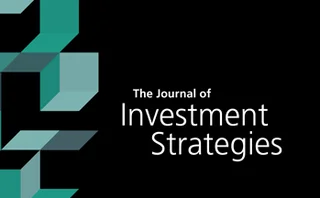Journals
An investigation of cyber loss data and its links to operational risk
This paper investigates cyber loss data and focuses on quantifying the direct financial and compensatory losses emanating from cyber risks.
The risk markup of intermittent renewable supply in German electricity forward markets
This paper presents an empirical analysis of how power shocks resulting from intermittent renewables affect the forecast error of the forward premium in German electricity markets.
A new approach to evaluating the cost-efficiency of complex hedging strategies: an application to electricity price–volume quanto contracts
In this paper, the authors propose a new hedging assessment model, the economic value of the incremental expected shortfall (EVIES), from a cost-efficiency perspective.
Model risk management: from epistemology to corporate governance
In this paper, the authors conduct an analysis of model risk in an attempt to understand the main issues that lead to failures and the best way to address such issues.
Nonparametric tests for jump detection via false discovery rate control: a Monte Carlo study
The main goal of this paper is to perform a comprehensive nonparametric jump detection model comparison and validation. To this end, the authors design an extensive Monte Carlo study to compare and validate these tests.
Managing supply chain risk through take-or-pay gas contracts in the presence of buyers’ storage facilities
In this paper, the authors study the enhanced value of a take-or-pay gas contract from a buyer’s perspective in the presence of spot market trading and local storage capability.
On probability of default and its relation to observed default frequency and a common factor
This paper considers a definition of through-the-cycle as independent from an economic state that can result in a time-varying TTC probability of default.
Asset correlation estimation for inhomogeneous exposure pools
This study investigates the systematic error that is made if the exposure pool underlying a default time series is assumed to be homogeneous when in reality it is not.
Can shorting leveraged exchange-traded fund pairs be a profitable trade?
In this paper, the authors examine if investors can profit from the underperformance of leveraged exchange-traded funds (ETFs) in long holding periods.
On the selection of loss severity distributions to model operational risk
This paper presents truncation probability estimates for loss severity data and a consistent quantile scoring function on annual loss data as useful severity distribution selection criteria that may stabilize regulatory capital.
Path independence of exotic options and convergence of binomial approximations
In this paper, the authors analyse the convergence of tree methods for pricing barrier and lookback options.
The standard market risk model of the Swiss solvency test: an analytic solution
This paper derives an alternative fast Fourier transform-based computational approach for calculating the target capital of the SST that is more than 600 times faster than a Monte Carlo simulation.
The use of business intelligence and predictive analytics in detecting and managing occupational fraud in Nigerian banks
The goal of this paper is to illustrate how Nigerian banks, and indeed banks elsewhere, can develop solutions that incorporate both BI and predictive analytics techniques in detecting, predicting, preventing and managing occupational fraud.
An advanced hybrid classification technique for credit risk evaluation
In this paper, the authors employ a hybrid approach to design a practical and effective CRE model based on a deep belief network (DBN) and the K-means method.
Dynamic volatility management: from conditional volatility to realized volatility
In this paper, the authors present a multiperiod portfolio management strategy that can be used to directly manage the realized volatility over a long time horizon.
Nonparametric versus parametric expected shortfall
In this paper, the authors use influence functions as a basic tool to study unconditional nonparametric and parametric expected shortfall (ES) estimators with regard to returns data influence, standard errors and coherence.
The efficiency of the Anderson–Darling test with a limited sample size: an application to backtesting counterparty credit risk internal models
This paper presents a theoretical and empirical evaluation of the Anderson–Darling test when the sample size is limited.
International Financial Reporting Standard 9 expected credit loss estimation: advanced models for estimating portfolio loss and weighting scenario losses
In this paper, the authors propose a model to estimate the expected portfolio losses brought about by recession risk and a quantitative approach to determine the scenario weights.
The 2D tree–grid method
In this paper, the authors introduce a novel, explicit, wide-stencil, two-dimensional (2D) tree–grid method for solving stochastic control problems (SCPs) with two space dimensions and one time dimension, or, equivalently, the corresponding Hamilton…
Risk data validation under BCBS 239
Based on a survey of twenty-nine major financial institutions, this paper aims to advise banks and other financial services firms on what is needed to get ready for and become compliant with BCBS 239, especially in the area of risk data validation.
Parameter estimation, bias correction and uncertainty quantification in the Vasicek credit portfolio model
This paper is devoted to the parameterization of correlations in the Vasicek credit portfolio model. First, the authors analytically approximate standard errors for value-at-risk and expected shortfall based on the standard errors of intra-cohort…
Factor investing: get your exposures right!
This paper is devoted to the question of optimal portfolio construction for equity factor investing. The authors discuss the question of multifactor portfolio construction and show that the simplistic approaches often used by practitioners tend to be…
Estimating maturity profiles of nonmaturing deposits
This paper proposes a method to extract deposit lifetime data from individual account transactions.







